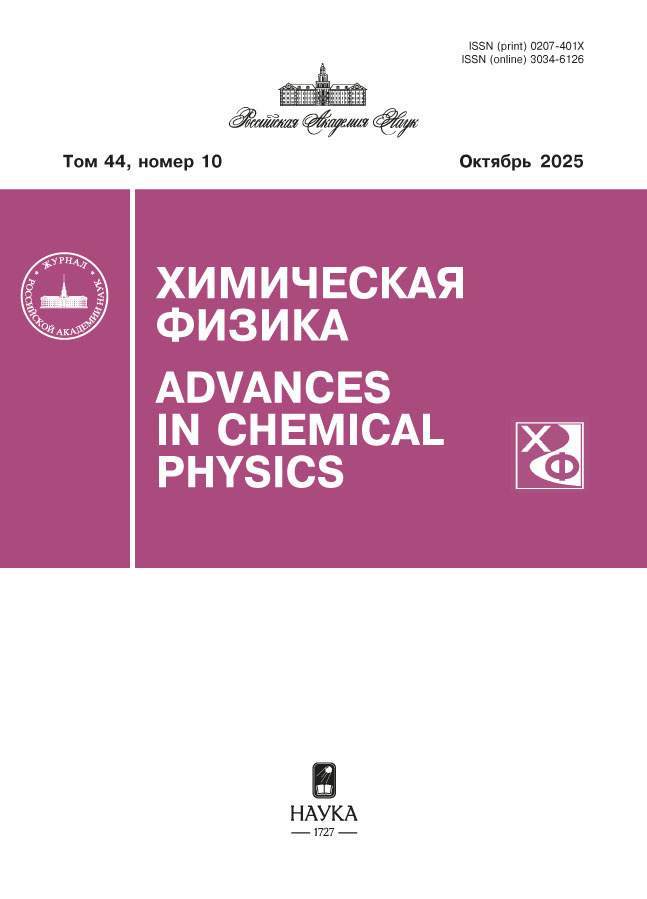Reactions of fluorine atoms with benzene, fluorobenzene and chlorobenzene
- Authors: Vasiliev E.S.1, Morozov I.I.1, Volkov N.D.1, Savilov S.V.2, Morozova O.S.1, Butkovskaya N.I.1, Khomyakova P.S.1,3
-
Affiliations:
- Semenov Federal Research Center for Chemical Physics, Russian Academy of Sciences
- Lomonosov Moscow State University
- Mendeleev University of Chemical Technology of Russia
- Issue: Vol 43, No 10 (2024)
- Pages: 36-48
- Section: Kinetics and mechanism of chemical reactions, catalysis
- URL: https://cardiosomatics.orscience.ru/0207-401X/article/view/680950
- DOI: https://doi.org/10.31857/S0207401X24100035
- ID: 680950
Cite item
Abstract
Benzene and its derivatives are extremely important substances in modern chemical technologies. However, emissions of these substances have an extremely negative impact on the atmosphere and ecology. Benzene is a substance of the second class of danger and its effect on the human body is fraught with serious consequences. In the event of man-made disasters, an urgent task is to convert benzene into less toxic substances. In this work, using a low-pressure flow reactor, the kinetic patterns of the reactions of atomic fluorine with benzene, fluorobenzene, and chlorobenzene at a temperature T = 293 K and a pressure of 0.8–1.3 Torr were established. The concentrations of reagents and products were controlled by molecular beam mass spectrometry. To determine reaction rate constants, the method of competing reactions was used. The reaction of fluorine atoms with cyclohexane was chosen as a competitor. As a result of the analysis using experimental and literature data, the following values of the rate constants of the studied reactions were obtained.
Full Text
About the authors
E. S. Vasiliev
Semenov Federal Research Center for Chemical Physics, Russian Academy of Sciences
Author for correspondence.
Email: vasiliev@chph.ras.ru
Russian Federation, Moscow
I. I. Morozov
Semenov Federal Research Center for Chemical Physics, Russian Academy of Sciences
Email: vasiliev@chph.ras.ru
Russian Federation, Moscow
N. D. Volkov
Semenov Federal Research Center for Chemical Physics, Russian Academy of Sciences
Email: vasiliev@chph.ras.ru
Russian Federation, Moscow
S. V. Savilov
Lomonosov Moscow State University
Email: vasiliev@chph.ras.ru
Russian Federation, Moscow
O. S. Morozova
Semenov Federal Research Center for Chemical Physics, Russian Academy of Sciences
Email: vasiliev@chph.ras.ru
Russian Federation, Moscow
N. I. Butkovskaya
Semenov Federal Research Center for Chemical Physics, Russian Academy of Sciences
Email: vasiliev@chph.ras.ru
Russian Federation, Moscow
P. S. Khomyakova
Semenov Federal Research Center for Chemical Physics, Russian Academy of Sciences; Mendeleev University of Chemical Technology of Russia
Email: vasiliev@chph.ras.ru
Russian Federation, Moscow; Moscow
References
- D. J. Smith, D. W. Setser, K. C. Kim, and D. J. Bogan, J. Phys. Chem. 81, 898 (1977). https://doi.org/10.1021/j100524a019
- J. Ebrecht, W. Hack, and H. G. Wagner, Ber. Bunsenges. Phys. Chem. 93, 619 (1989). https://doi.org/10.1002/bbpc.19890930520
- F. Markert and P. Pagsberg, Chem. Phys. Lett. 209, 445 (1993). https://doi.org/10.1016/0009-2614(93)80115-6
- E. S. Vasiliev, N. D. Volkov, G. V. Karpov, et al., Russ. J. Phys. Chem. A 94, 2004 (2020). https://doi.org/10.1134/S0036024420100295
- E. S. Vasiliev, N. D. Volkov, G. V. Karpov, et al., Russ. J. Phys. Chem. B 15, 789 (2021); https://doi.org/10.1134/S1990793121050213
- S. O. Adamson, D. D. Kharlampidi, A. S. Shtyrkova, et al., Atoms 11, 132 (2023). https://doi.org/10.3390/atoms11100132
- R. Atkinson, D. L. Baulch, R. A. Cox, et al., Atmos. Chem. Phys. 6, 3625 (2006). https://doi.org/10.5194/acp-6-3625-2006
- E. S. Vasiliev, G. V. Karpov, D. K. Shartava, et al., Russ. J. Phys. Chem. B 16, 388 (2022). https://doi.org/10.1134/S1990793122030113
- I. I. Morozov, E. S. Vasiliev, N. I. Butkovskaya, et al., Russ. J. Phys. Chem. B 17, 1091 (2023). https://doi.org/10.1134/S1990793123050251
- R. Pearson, J. Cowles, G. Hermann, D. Gregg, and J. Creighton, IEEE J. Quantum Electron. 9, 879 (1973). https://doi.org/10.1109/JQE.1973.1077761
- R. G. Manning, E. R. Grant, J. C. Merrill, N. J. Parks, and J. W. Root, Int. J. Chem. Kinet. 7, 39 (1975). https://doi.org/10.1002/kin.550070106
- NIST Chemistry WebBook. https://webbook.nist.gov/chemistry/
- P. Heinemann-Fiedler, K. Hoyermann, and G. Rohde, Ber. Bunsenges. Phys. Chem. 94, 1400 (1990). https://doi.org/10.1002/bbpc.199000042
- E. S. Vasiliev, I. I. Morozov, and G. V. Karpov, Int. J. Chem. Kinet. 51, 909 (2019). https://doi.org/10.1002/kin.21319
- R. Atkinson, D. L. Baulch, R. A. Cox, et al., Atmos. Chem. Phys. 7, 981 (2007). https://doi.org/10.5194/acp-7-981-2007
- E. S. Vasiliev, I. I. Morozov, W. Hack, K.-H. Hoyermann, and M. Hold, Kinet. Catal. 47, 834 (2006). https://doi.org/10.1134/S0023158406060048
- S. O. Adamson, D. D. Kharlampidi, A. S. Shtyrkova, et al., Russ. J. Phys. Chem. B 18, 627 (2024). https://doi.org/10.1134/S1990793124700192
- I. I. Morozov, E. S. Vasiliev, N. D. Volkov, et al., Russ. J. Phys. Chem. B 16, 877 (2022). https://doi.org/10.1134/S1990793122050220
- Il. S. Golyak, D. R. Anfimov, I. B. Vintaykin, et al., Russ. J. Phys. Chem. B 17, 320 (2023). https://doi.org/10.1134/S1990793123020264
Supplementary files















